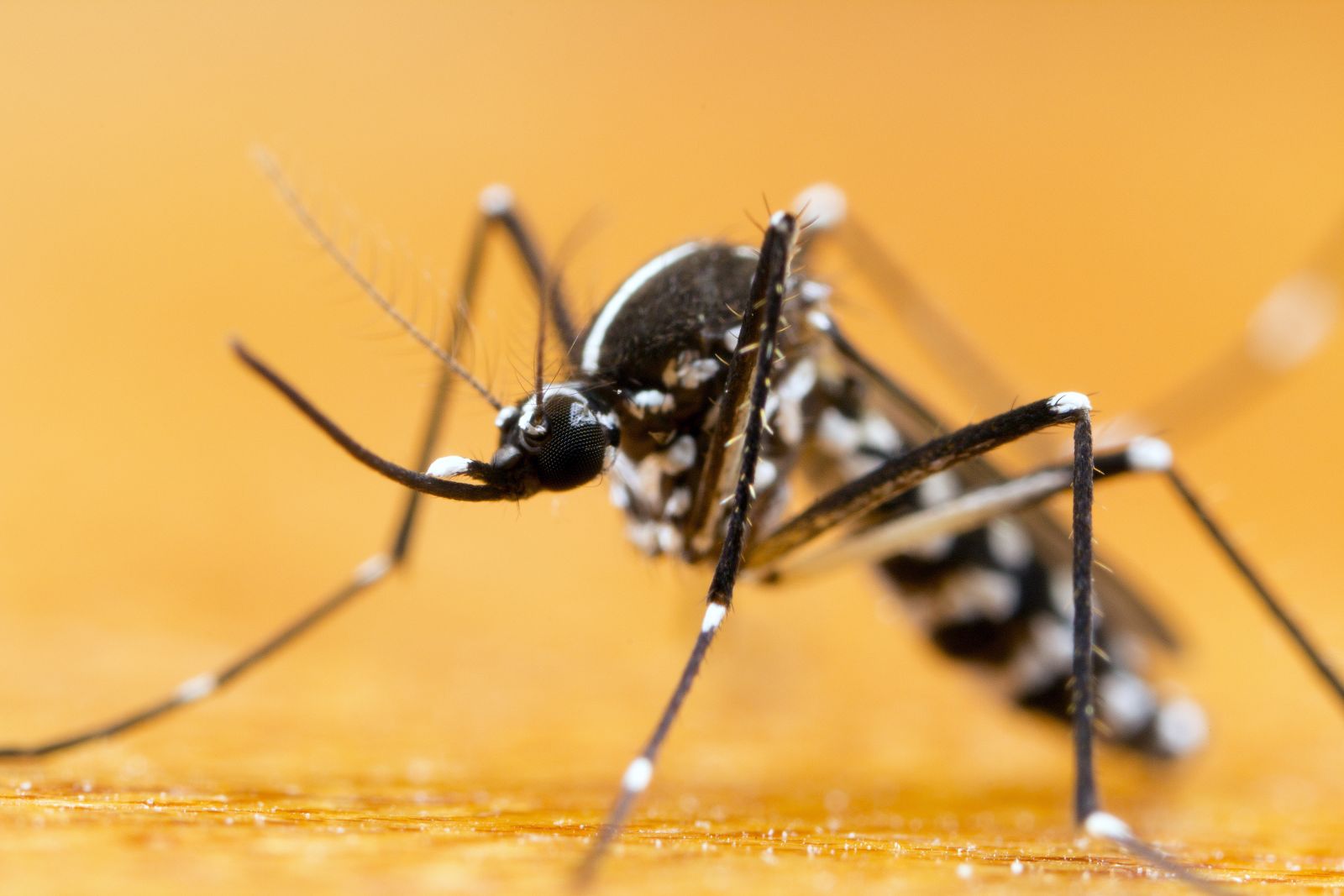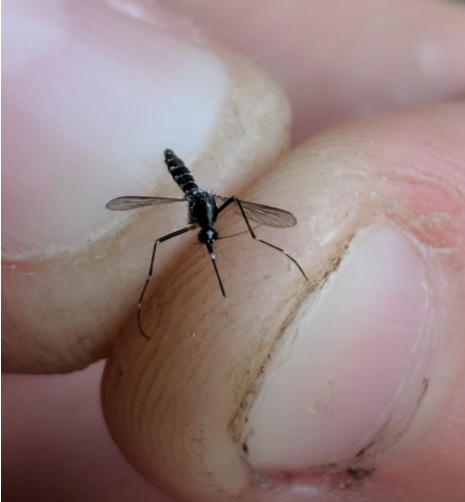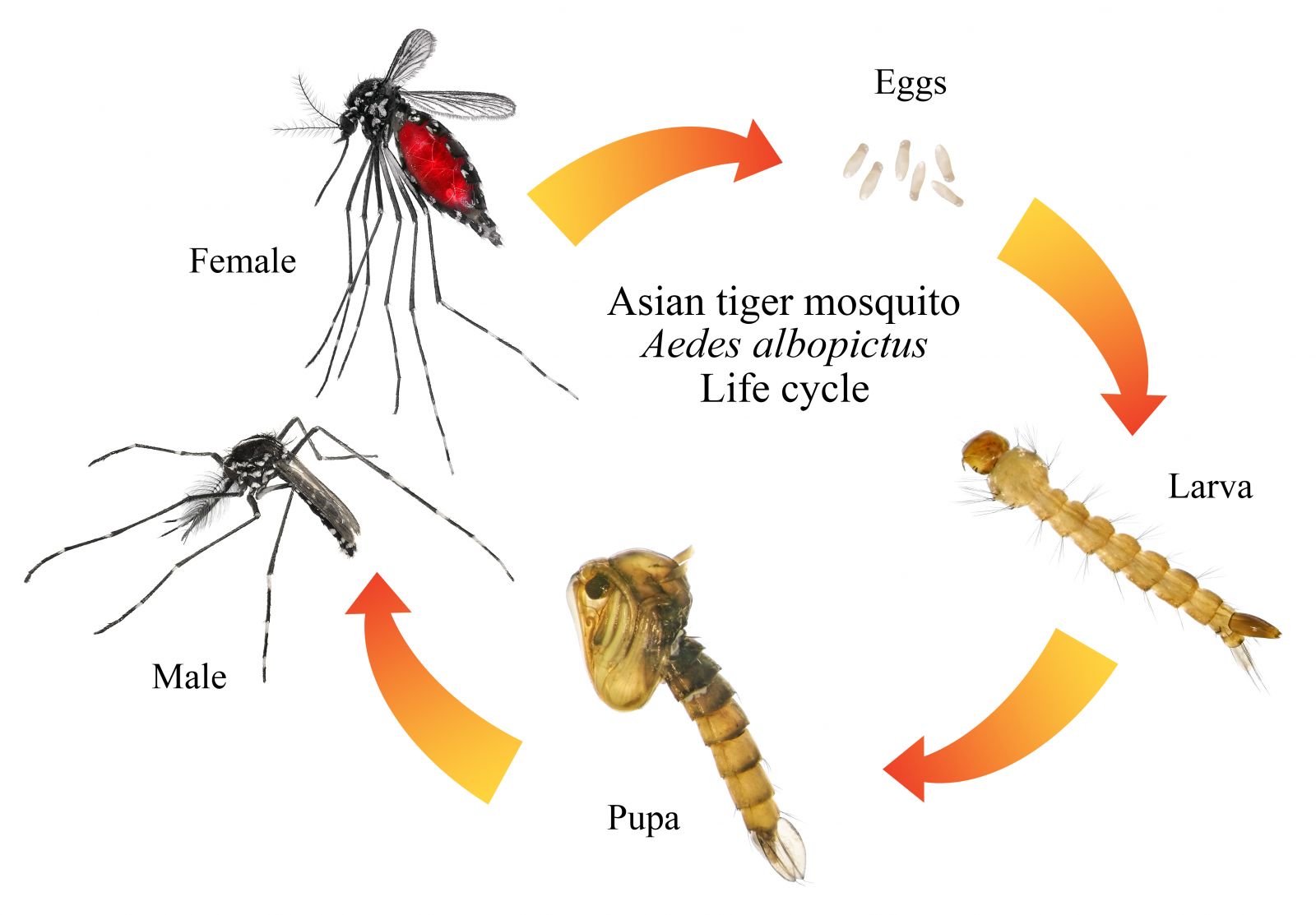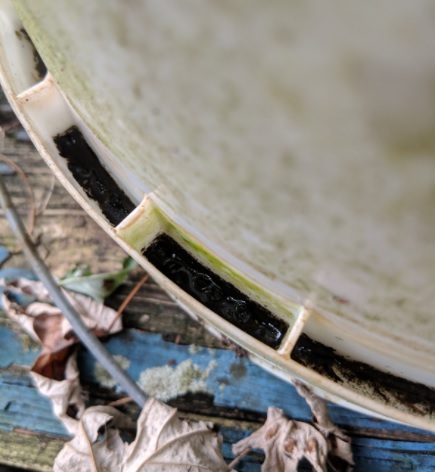August 21, 2020
Asian Tiger Mosquitoes: How to Bite Back
If you know how to fight back, you can win the battle against Asian tiger mosquitoes!
By Jason Goetz, Franklin County Mosquito and Tick-Borne Disease Control Specialist

Over 50% of the phone calls received each year by the Franklin County Mosquito Disease Control Program from residents with mosquito problems are due to the Asian tiger mosquito. This invasive mosquito species is a nuisance that has been interrupting outdoor summer activities in Franklin County since the late 2000s. If left unchecked, this mosquito can keep you inside during the most pleasant time of the year. Sometimes infestations can be so great that mowing the lawn or sitting on your porch can be an impossible task without mosquito repellent. Not only can these mosquitoes be bothersome, but they also have the ability to transmit West Nile Virus. The good news is that if you know how to fight back, you can win the battle against Asian tiger mosquitoes and enjoy your summer.
Asian Tiger Mosquitoes in the United States
First discovered in the United States in Texas in 1985, the Asian tiger mosquito has entered many areas of the country where the climate and habitat is suitable for them to thrive. Franklin County’s first Asian tiger mosquito was discovered in Chambersburg Borough in 2007. It was a single mosquito located at one trap site. Since then, the Franklin County’s Mosquito Borne Disease program has witnessed these mosquitoes build populations across the county over the years, and in 2020 there were Asian tiger mosquitoes caught in traps in every township and borough within the county. Unfortunately, the Asian tiger mosquito is here to stay. Residents can learn to “bite back” with effective control measures and live without them.
Before we talk about how to control Asian tiger mosquitoes, we must first understand them.
Asian Tiger Mosquito Identification, Habitat and Behavior
Many people believe that a mosquito is just a mosquito, but that is not the case. Different mosquito species behave differently, breed in different types of water, and choose different blood meals. In fact, there are some mosquito species that do not even bite humans. Unfortunately for us, that is not the case for the Asian tiger mosquito which regularly bites people. The increase in their population usually occurs around mid-July, peaks in mid-August, and tapers off in September when night time temperatures decrease. These mosquitoes have certain traits and characteristics that make them easily distinguishable from other mosquito species.
Asian tiger mosquitoes are black in color with white stripes. While many other types of mosquitoes only bother us around dusk and dawn, Asian tigers will bite during daytime hours. So if you are being bothered by mosquitoes during the day, there is a high likelihood that you are encountering Asian tiger mosquitoes.

Close up photo of an Asian tiger mosquito
Asian tigers do not typically breed in swamps or retention ponds, instead they use artificial containers filled with water to lay their eggs where they will emerge into larvae and into adults. Any artificial container holding water can breed this species of mosquito, even something as small as a bottle cap. Some hot spot areas for larvae include: bird baths, corrugated piping from downspouts, clogged rain gutters, flower pots, buckets, old tires and tarps.
Mosquito Control Measures
Any artificial containers holding water should be dumped and stored in a way as to not collect water. Eliminating the breeding habitat is the number one defensive strategy in reducing Asian tiger mosquitoes around your home. Without the ability to lay eggs, Asian Tiger populations will dwindle quickly. The Asian tiger mosquito has a very short flight range compared to other mosquitoes. They typically do not fly more than 200 yards from where they are born. This is important to know because if you have Asian tiger mosquitoes there is a high likelihood that you or a neighboring property is the one breeding them.

If you have any standing water that you cannot eliminate or do not wish to monitor you can buy bacillus thuringiensis subspecies isrealensis (BTI) mosquito dunks from any home and garden store and place them in the standing water around your home. BTI is a natural bacteria found in the soil that kills mosquito larvae when they ingest it. Be sure to read the label of how to use this product and how long it will continue working. Once you eliminate your breeding sources, you can use a residual adult mosquito spray to cover the vegetation around your home where mosquitoes like to rest and hide. This can also be purchased at any home and garden store (one popular brand is Cutter and Summit). These products work by simply connecting the bottle to the end of your garden hose and spraying. The spray typically works for two to four weeks depending on the amount of precipitation during that time frame. Again, be sure to read the label one these products for directions and use.

Even something as small as this 5 gallon bucket lip holding water can breed Asian tiger mosquitoes.
Without the community’s attention to our growing Asian tiger mosquito population we will continue to see the population grow and show up in new areas of the county. We must do the best we can to keep these mosquitoes at bay and eliminate standing water around our homes and properties. Make it part of your weekly routine to survey your property and identify any artificial container holding water and dump it. Only by working together will we be able to live without the Asian tiger mosquito.
Jason Goetz is the Mosquito & Tick Borne Disease Control Specialist at the Franklin County Planning Department. He administers the PA west Nile Virus Surveillance, Prevention and Control Plan using the principles of Integrated Pest Management and focusing on education, habitat reduction, surveillance, and control. For more information, visit http://bit.ly/FranklinCountyPAmosquitoprogram.
Return to list.

